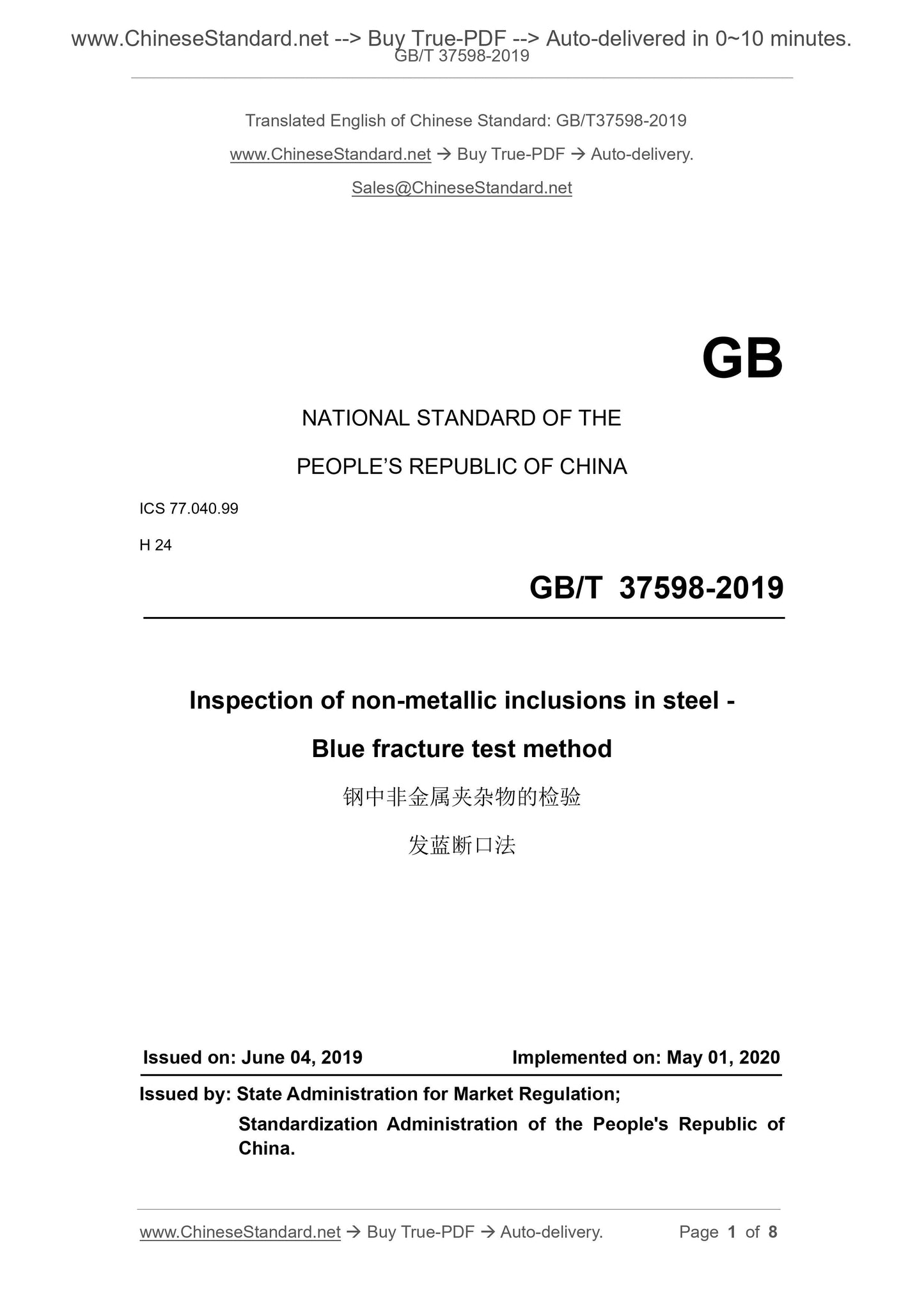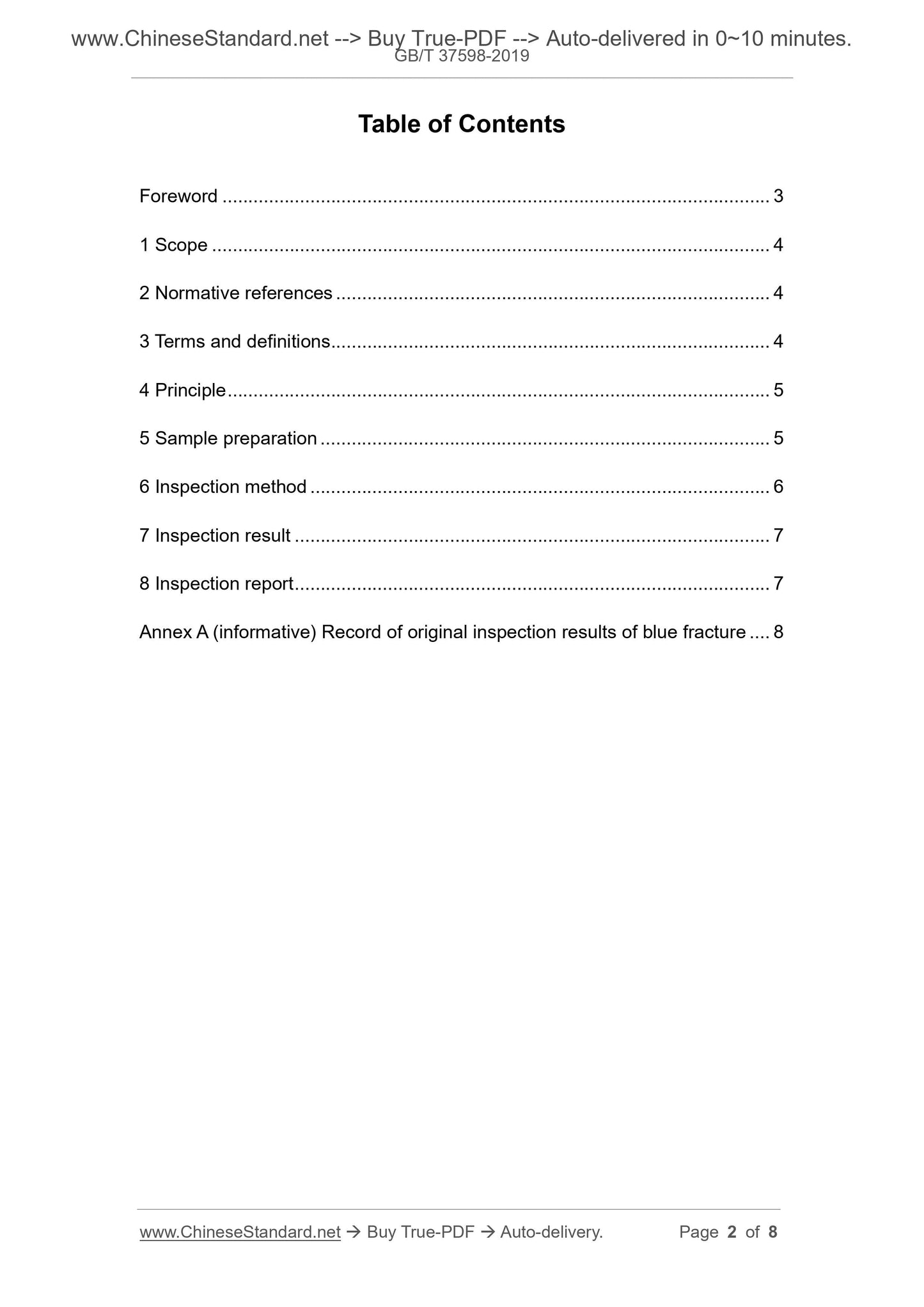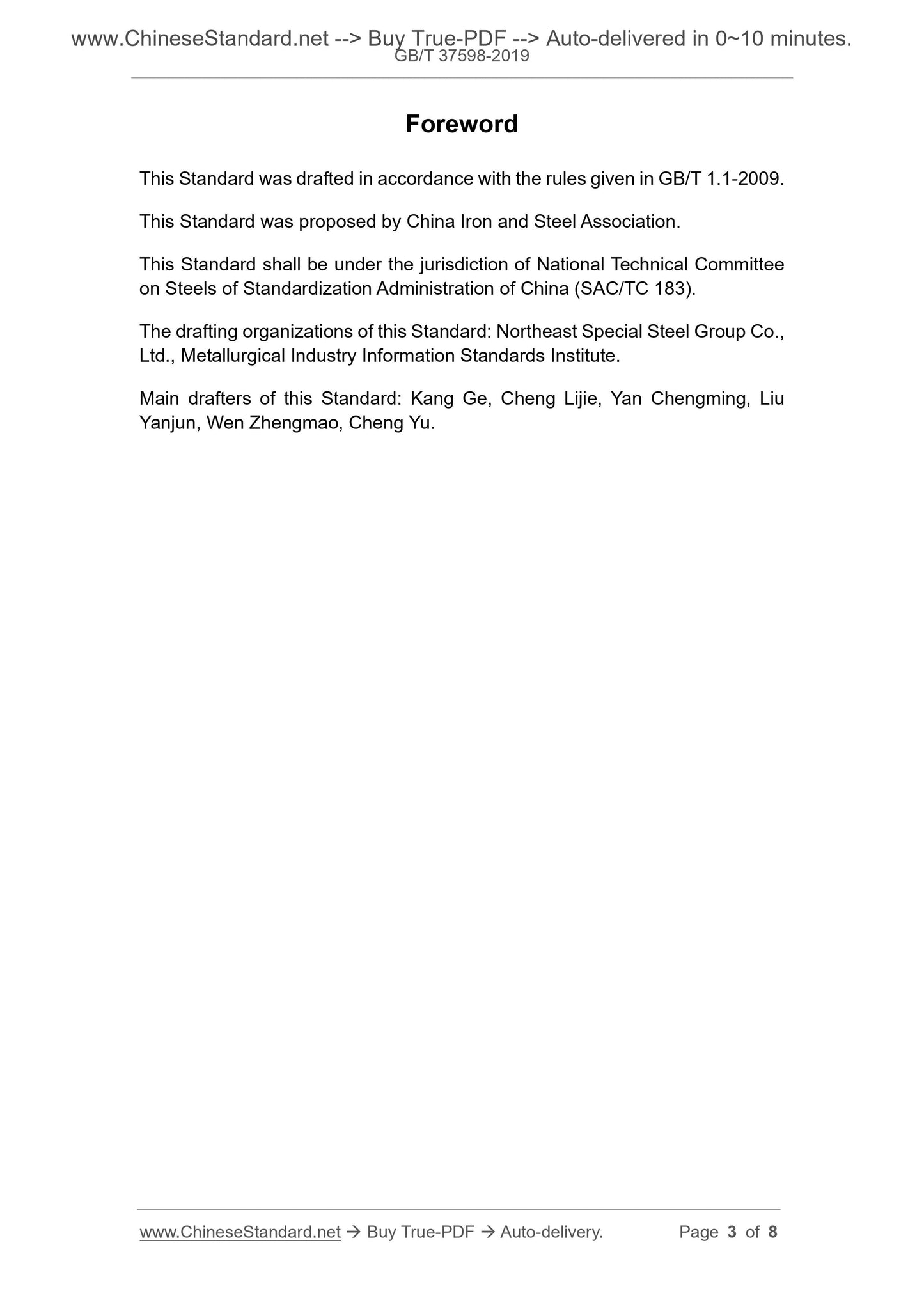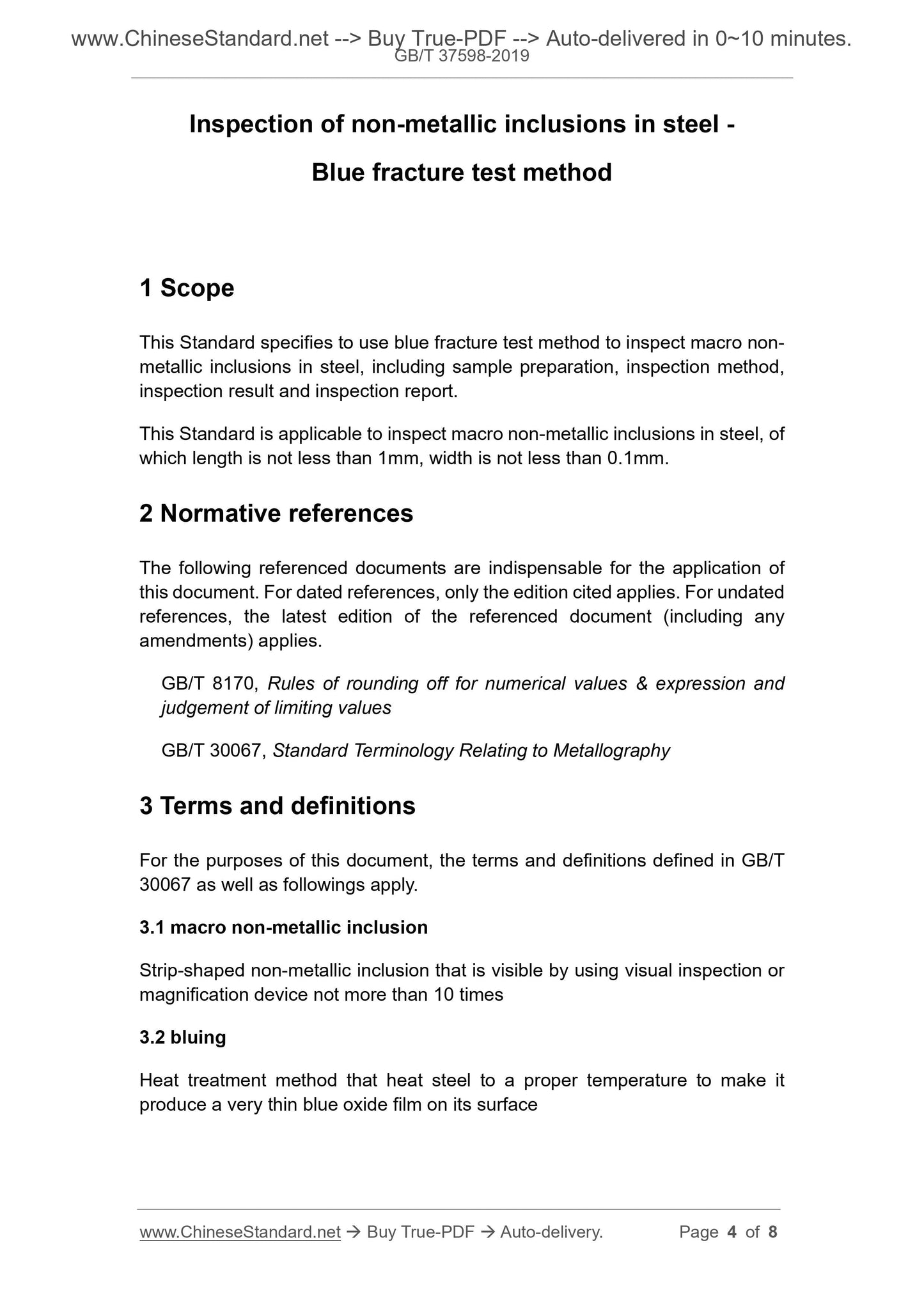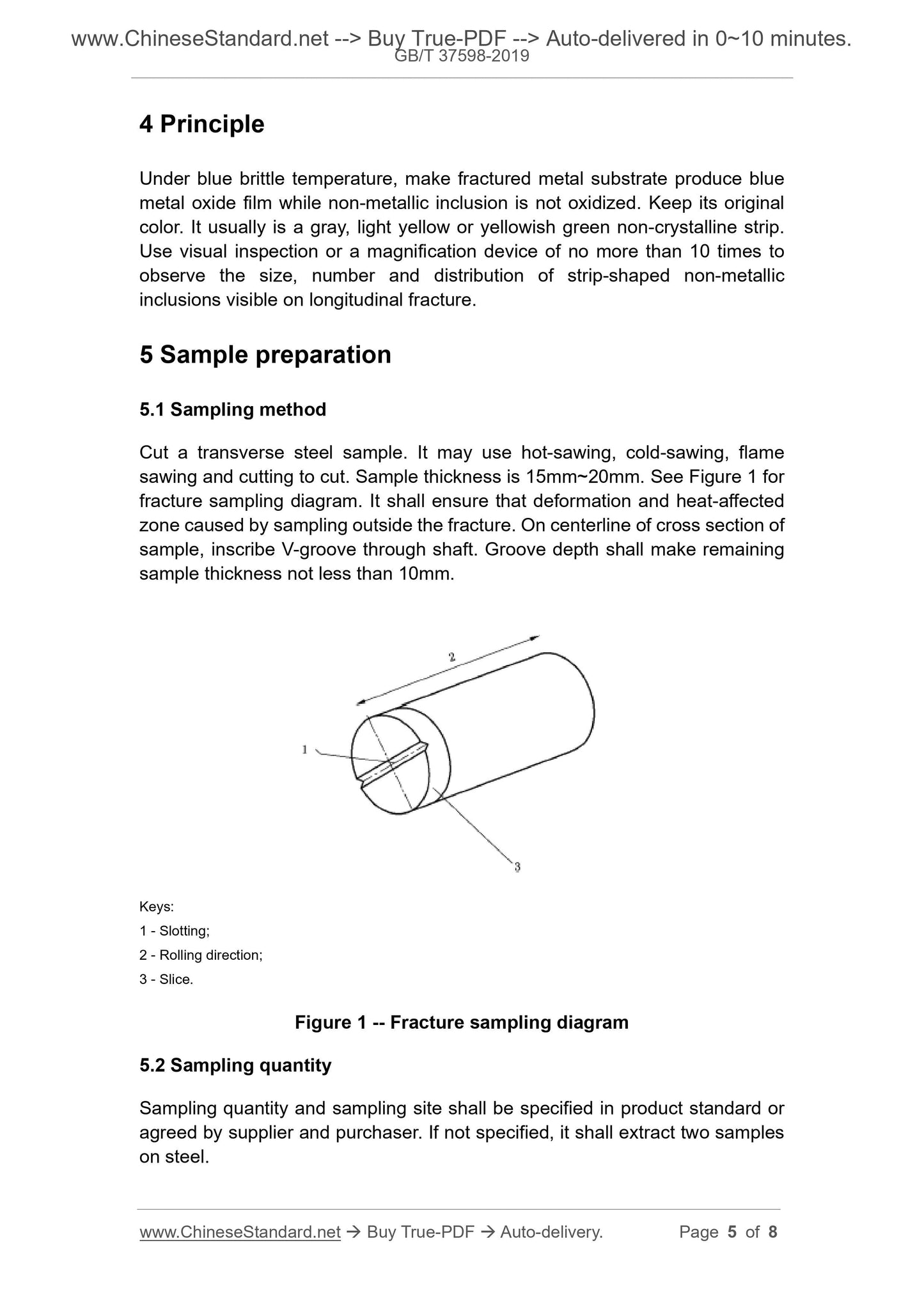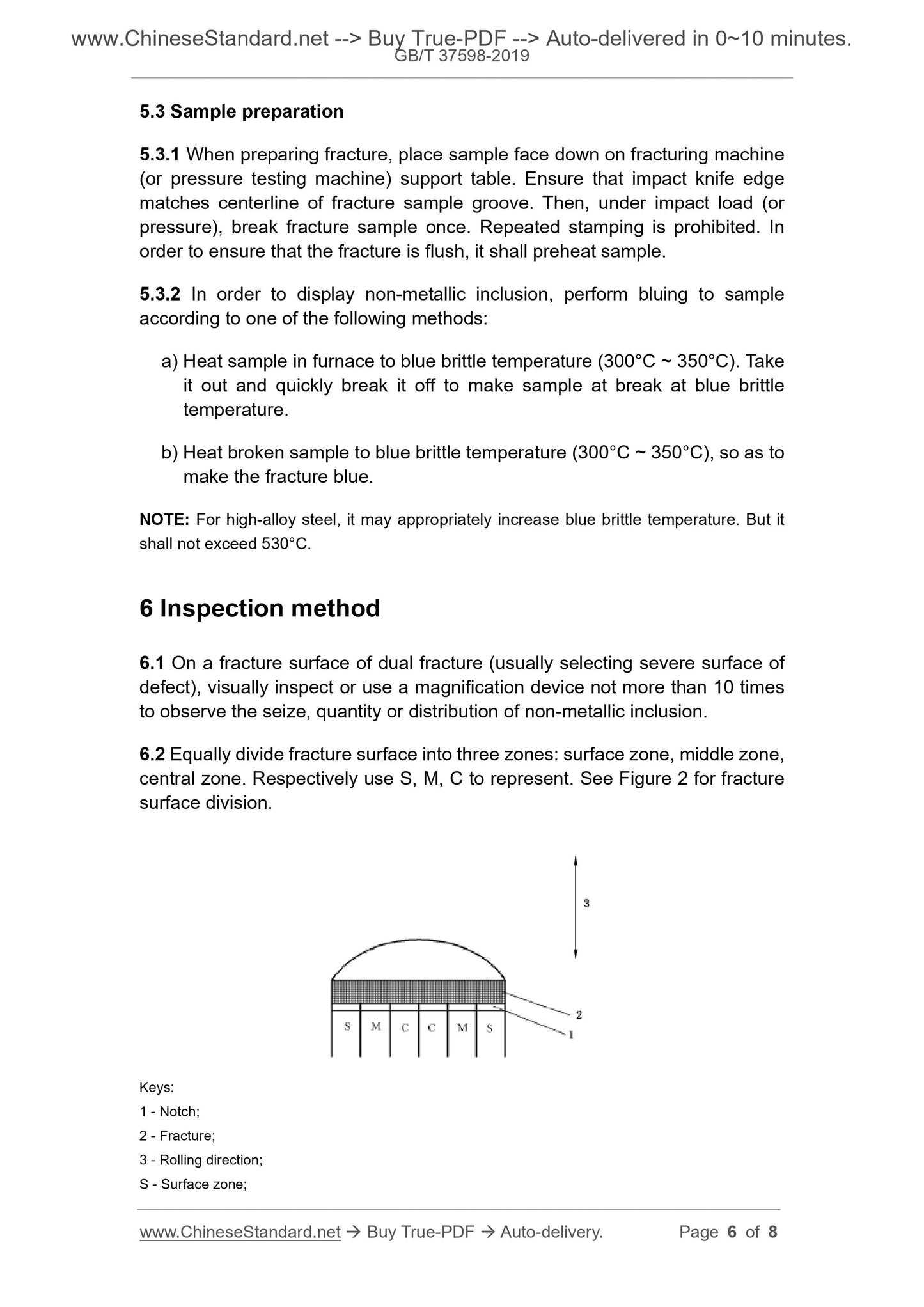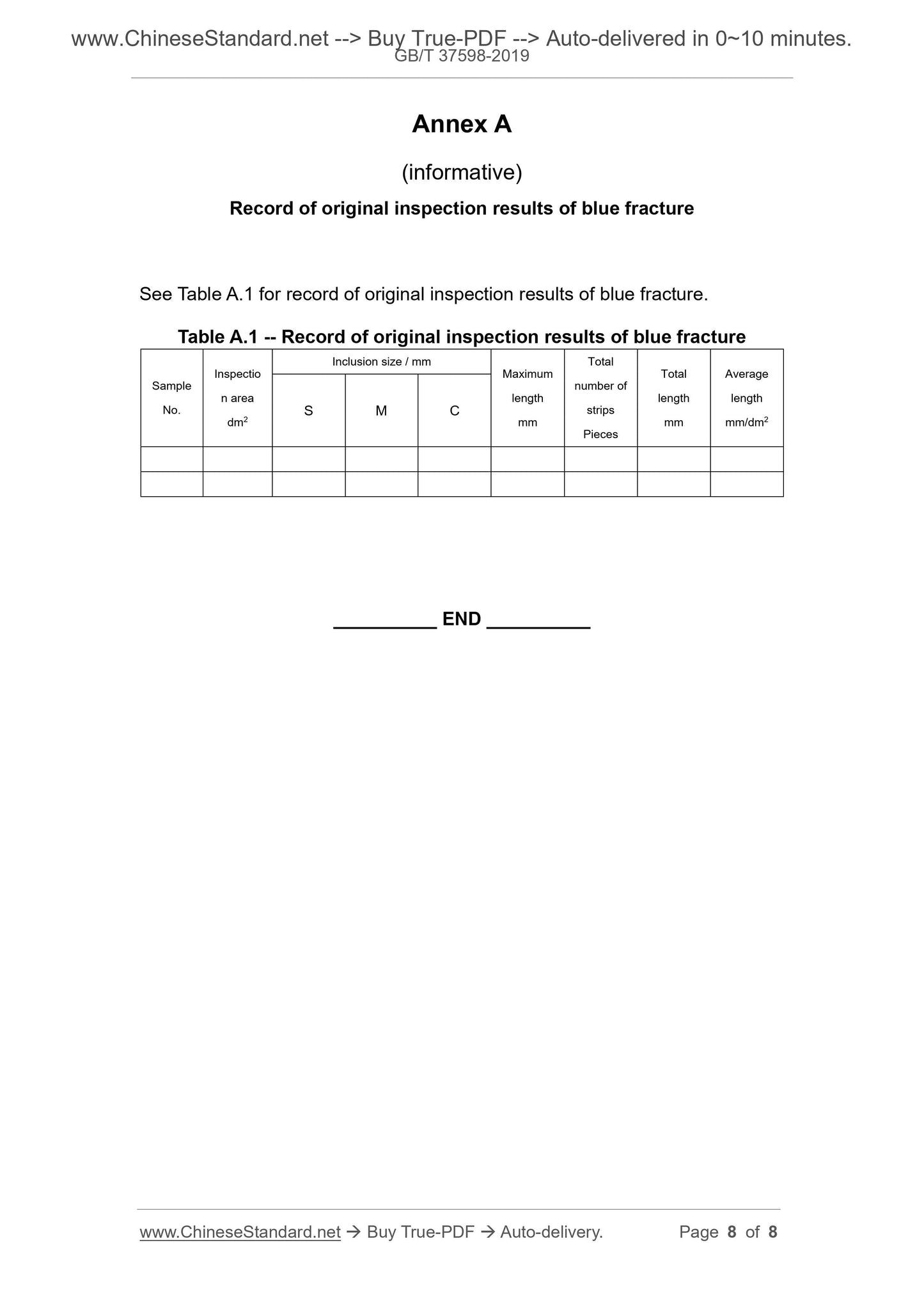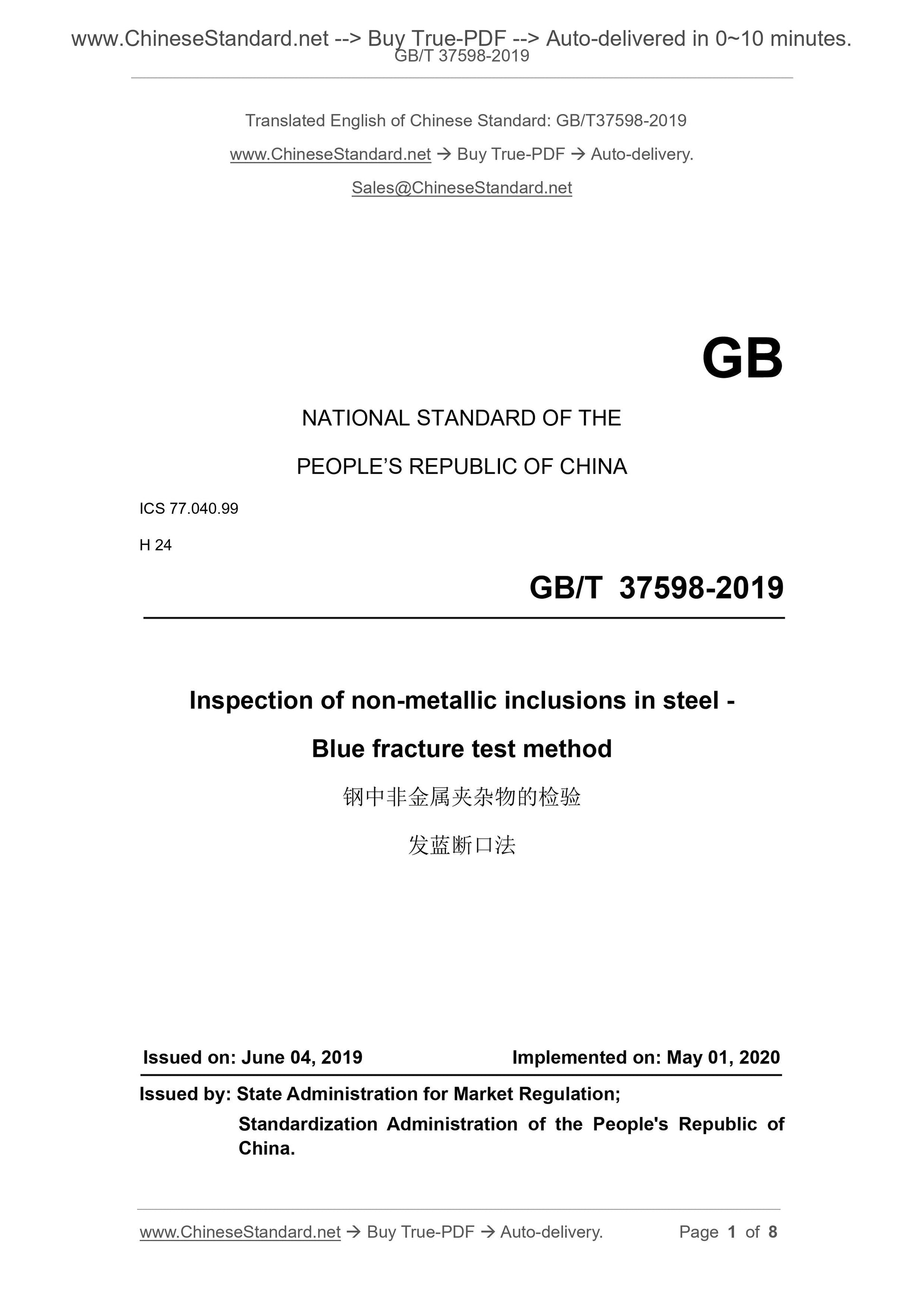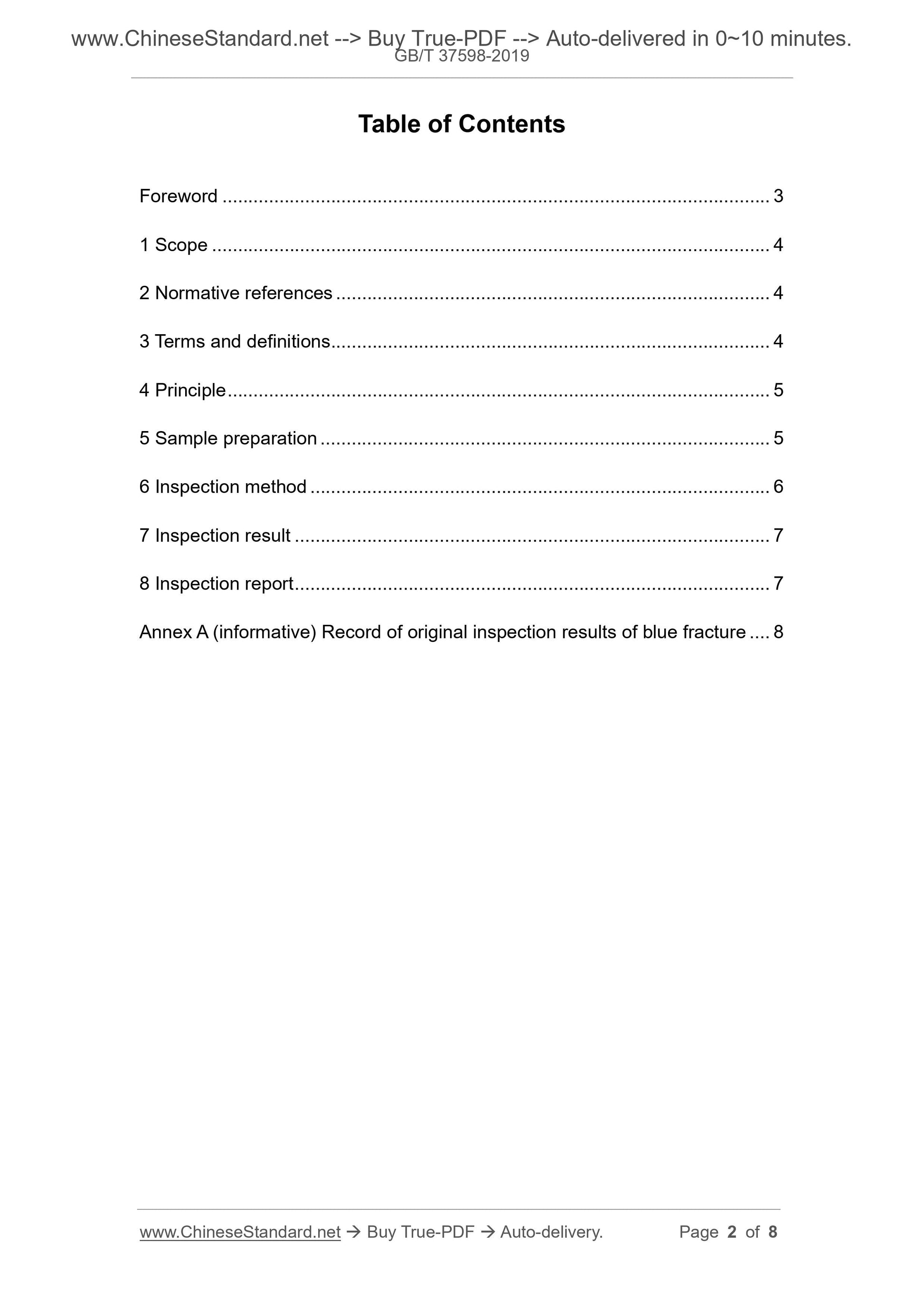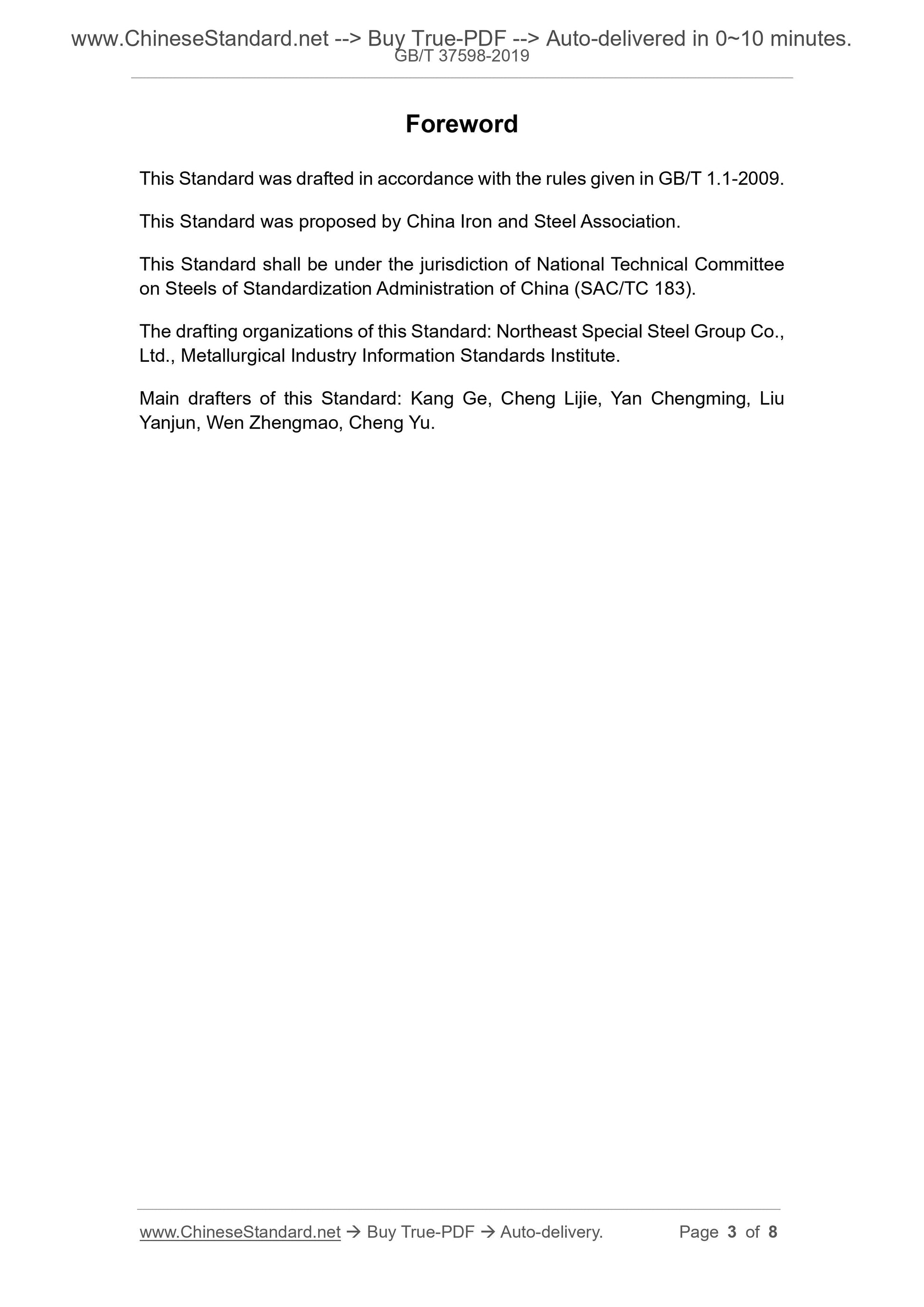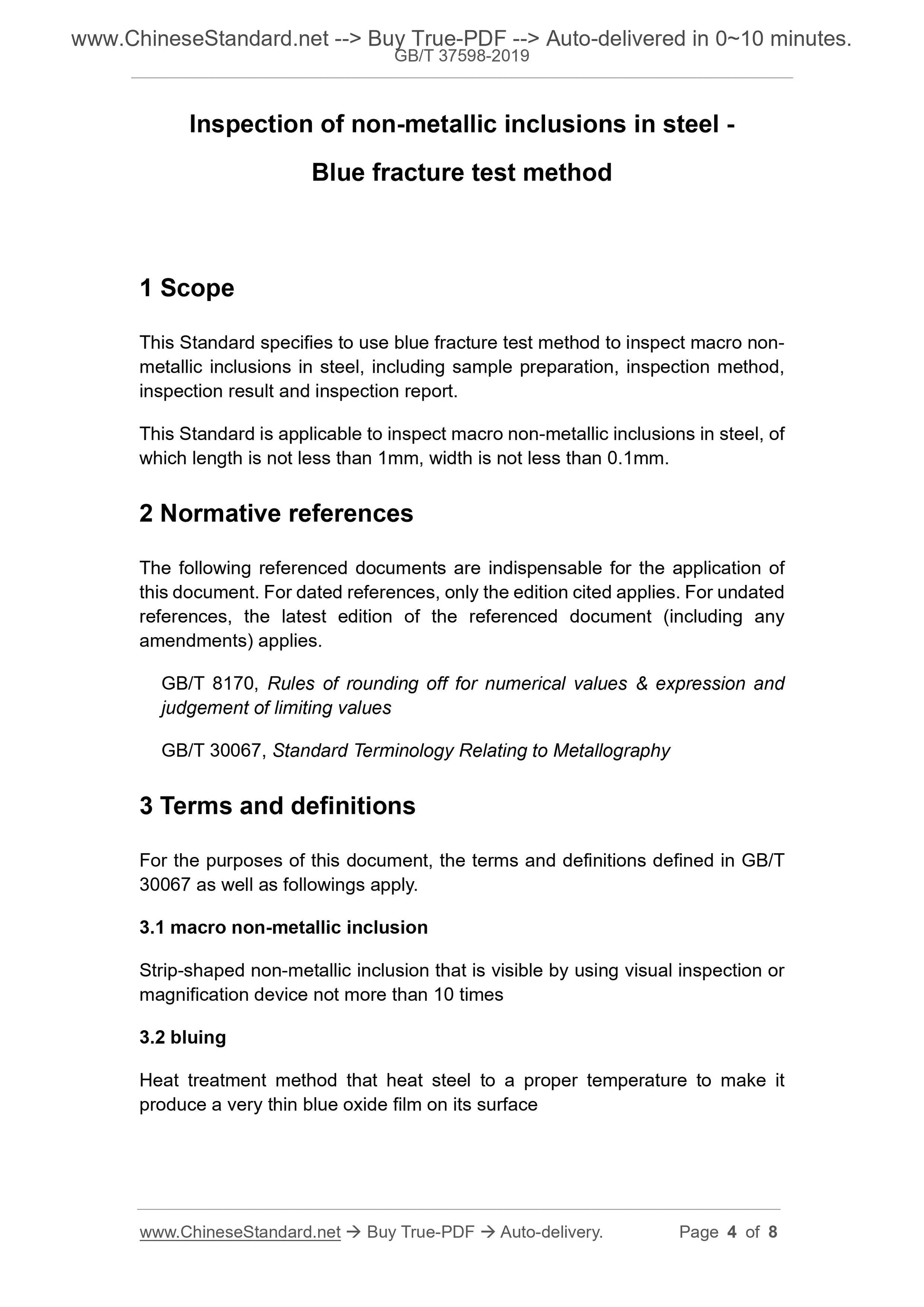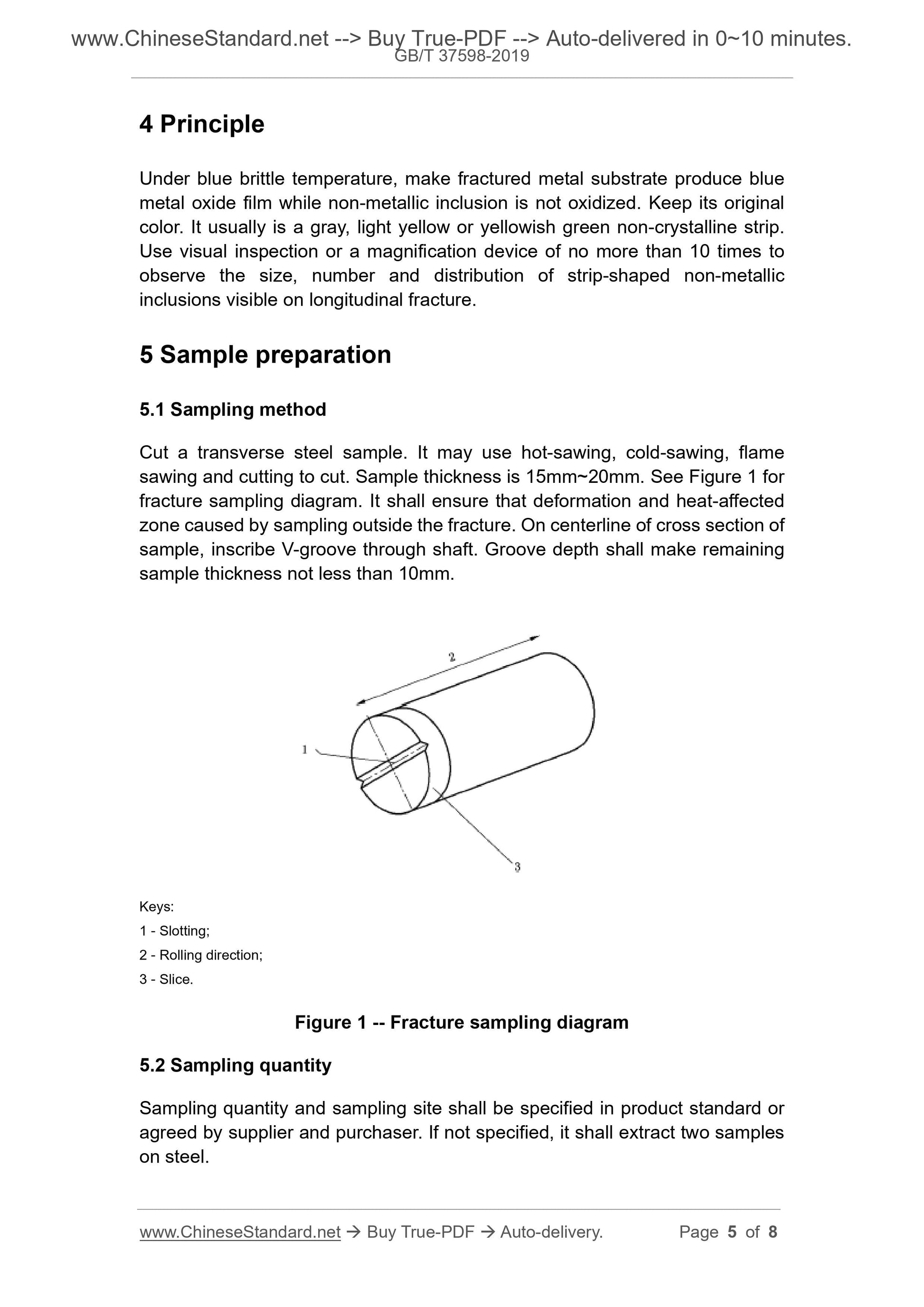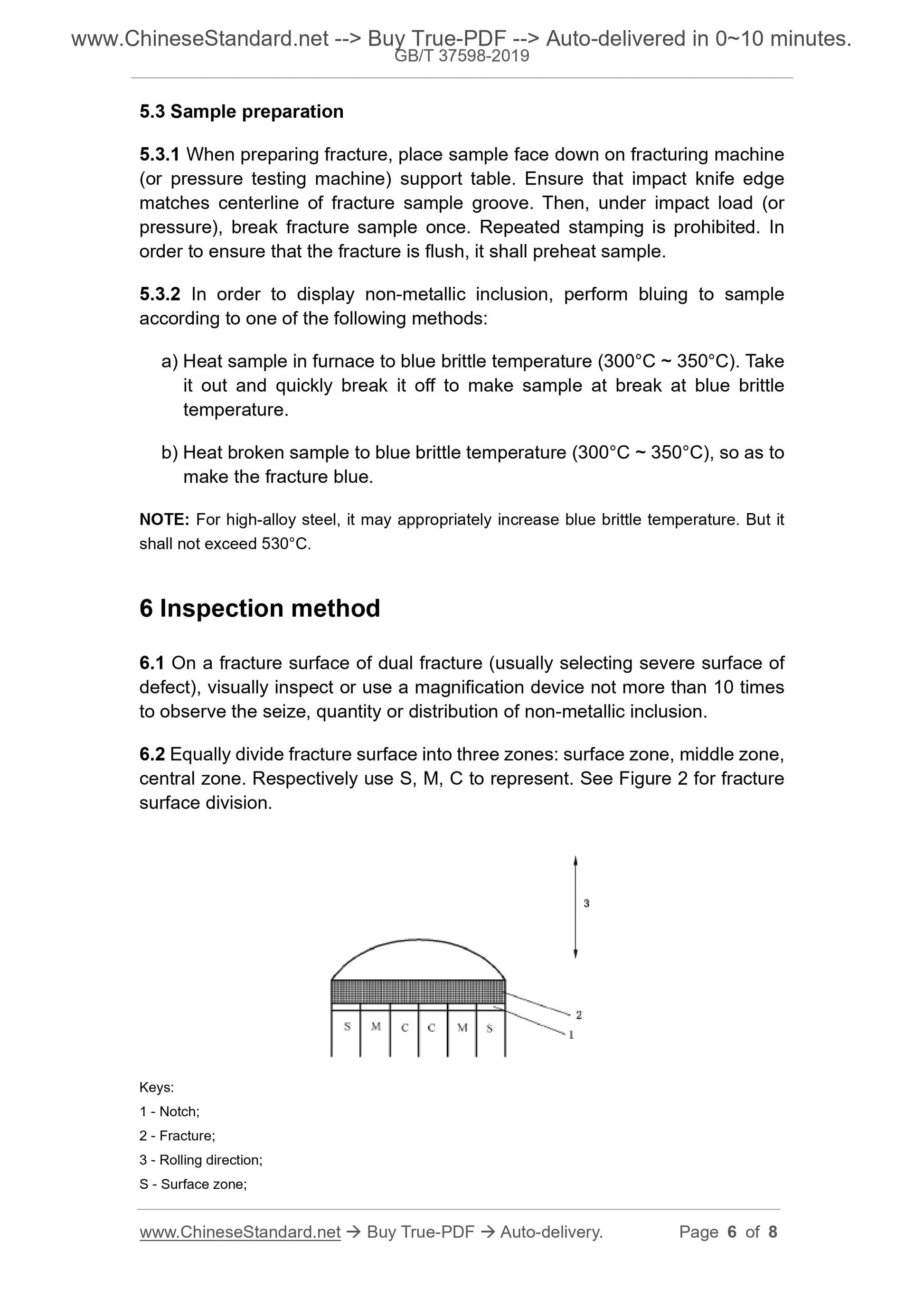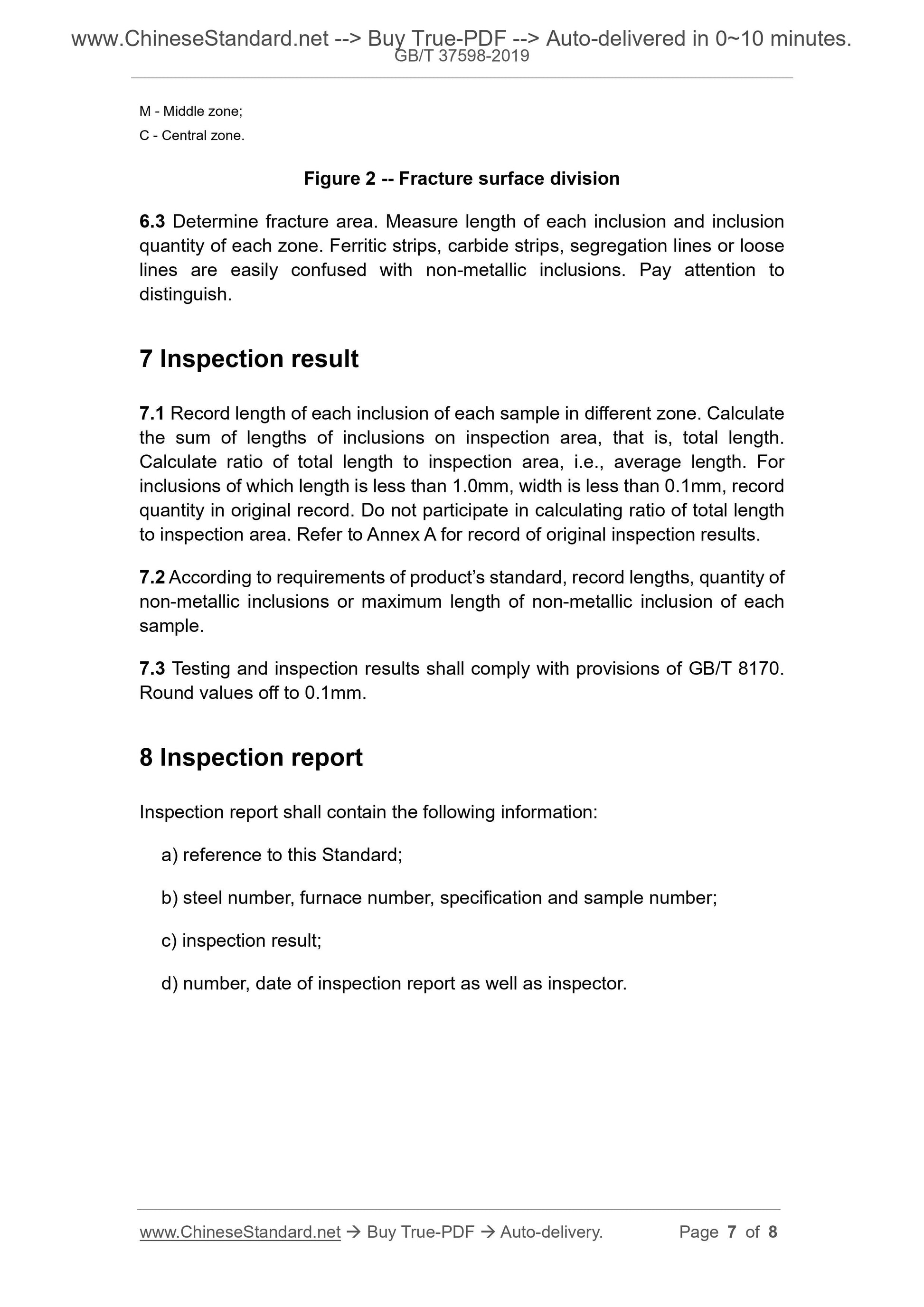1
/
of
8
www.ChineseStandard.us -- Field Test Asia Pte. Ltd.
GB/T 37598-2019 English PDF (GB/T37598-2019)
GB/T 37598-2019 English PDF (GB/T37598-2019)
Regular price
$90.00
Regular price
Sale price
$90.00
Unit price
/
per
Shipping calculated at checkout.
Couldn't load pickup availability
GB/T 37598-2019: Inspection of non-metallic inclusions in steel - Blue fracture test method
Delivery: 9 seconds. Download (and Email) true-PDF + Invoice.Get Quotation: Click GB/T 37598-2019 (Self-service in 1-minute)
Newer / historical versions: GB/T 37598-2019
Preview True-PDF
Scope
This Standard specifies to use blue fracture test method to inspect macro non-metallic inclusions in steel, including sample preparation, inspection method,
inspection result and inspection report.
This Standard is applicable to inspect macro non-metallic inclusions in steel, of
which length is not less than 1mm, width is not less than 0.1mm.
Basic Data
| Standard ID | GB/T 37598-2019 (GB/T37598-2019) |
| Description (Translated English) | Inspection of non-metallic inclusions in steel - Blue fracture test method |
| Sector / Industry | National Standard (Recommended) |
| Classification of Chinese Standard | H24 |
| Classification of International Standard | 77.040.99 |
| Word Count Estimation | 6,625 |
| Date of Issue | 2019-06-04 |
| Date of Implementation | 2020-05-01 |
| Issuing agency(ies) | State Administration for Market Regulation, China National Standardization Administration |
Share
